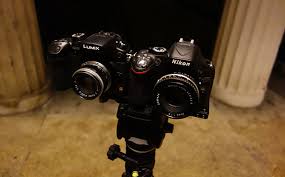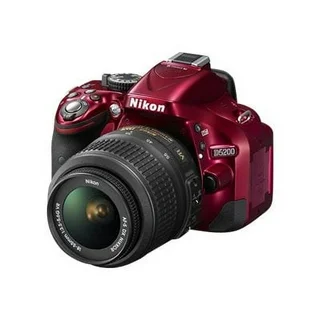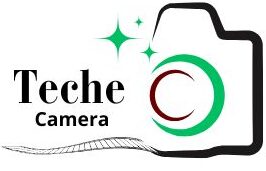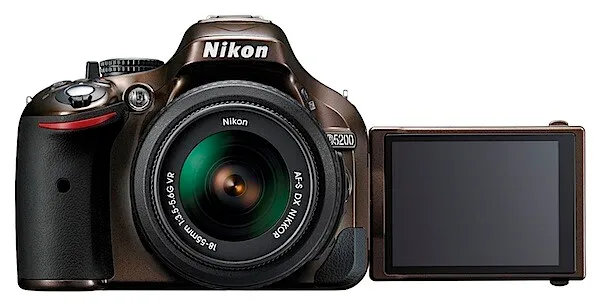The Nikon D5200 DSLR camera may be an older model, but it still offers serious value for beginners and photography enthusiasts in 2025. With a 24.1MP sensor, a fully articulating LCD screen, and a reliable autofocus system, this mid-range DSLR continues to compete with newer entry-level options. In this detailed review, we’ll explore its build quality, performance, image output, video features, and usability, so you can decide if the D5200 is still the right camera for your needs today.
1. Nikon D5200 DSLR Camera Review: Is It Still Worth It in 2025?
The Nikon D5200 DSLR camera remains a popular choice in 2025 for photography beginners and hobbyists looking to move beyond smartphones or compact cameras. Although it’s been around for several years, it still offers impressive features that match the needs of many casual and even semi-serious photographers.
Its 24.1MP sensor, reliable autofocus system, and flip-out LCD make it stand out in its price range. While newer mirrorless cameras dominate the market now, the D5200 continues to appeal to those who prefer the classic DSLR experience, optical viewfinder, and compatibility with a wide range of Nikon F-mount lenses.
If you’re considering buying your first DSLR or upgrading from an older Nikon model, the D5200 still delivers strong value, especially in the second-hand or refurbished market.
2. Key Specifications of the Nikon D5200 DSLR Camera
Understanding the technical features is key when choosing a camera. The D5200 balances performance and simplicity. Here’s an expanded breakdown of its core specs:
- Sensor: 24.1MP APS-C CMOS sensor (made by Toshiba)
- Image Processor: EXPEED 3
- Autofocus System: 39-point AF with 9 cross-type sensors for better precision
- Metering System: 2016-pixel RGB sensor for accurate exposure
- ISO Range: 100 to 6400 (expandable to 25600 for low-light use)
- Continuous Shooting Speed: 5 frames per second (fps)
- Video: Full HD 1080p at 60i/50i with stereo sound recording
- LCD Screen: 3-inch vari-angle (swivel) LCD, 921,000-dot resolution
- Viewfinder Coverage: 95% of the frame
- Storage: SD, SDHC, SDXC cards (supports UHS-I)
- Battery: EN-EL14, approx. 500 shots per charge
- Weight: Approx. 555g (with battery and card)
These specs place the D5200 solidly in the mid-range DSLR category, powerful enough for enthusiasts, yet not overwhelming for newcomers.
3. Build Quality and Design: How Solid Is the D5200?
The Nikon D5200 is built with a polycarbonate body, keeping the camera lightweight without sacrificing strength. While it’s not as rugged as high-end models, it feels well-made and durable in daily use. The deep handgrip makes the camera comfortable to hold, even during long photo sessions.
All buttons and dials are logically placed, and the build feels solid for its class. The rear buttons are grouped to the right, making one-handed use easier. Although it lacks weather sealing, the D5200 can still handle general outdoor use if you avoid extreme rain or dust.
Its design strikes a balance between portability and ergonomics, making it a good choice for travelers, street photographers, and hobbyists.
4. Image Quality and Sensor Performance of the D5200
One of the most impressive features of the D5200 is its image quality. The 24.1MP Toshiba sensor captures high levels of detail, producing sharp and vibrant photos. Even when cropped, images retain clarity.
The dynamic range is wide, allowing you to recover details from highlights and shadows during editing. Color reproduction is natural, thanks to Nikon’s well-tuned Picture Control system. Skin tones look realistic, and landscape shots show good contrast and color balance.

However, in very deep shadows, especially if heavily underexposed, you may notice a faint pattern noise known as banding. This occurs during aggressive editing or shadow recovery, but it’s rare in normal use. Overall, the image quality easily matches many modern DSLRs, making the D5200 a solid performer in both JPEG and RAW modes.
5. Nikon D5200 Autofocus and Metering: Real-World Experience
The 39-point autofocus system, inherited from the D7000, is fast and reliable. It’s a significant upgrade from the 11-point systems in entry-level models like the D3200. The 9 cross-type sensors in the center help with precision focusing, especially when shooting moving subjects.
Autofocus works well for portraits, landscapes, and general scenes. While it won’t match newer mirrorless systems for speed or eye-tracking, it performs well in bright light and moderate action.
The 2016-pixel RGB metering sensor offers good exposure control. However, in backlit situations or scenes with high contrast, the metering can over- or under-expose. This is easily fixed with exposure compensation or switching to spot metering for tricky lighting.
6. Handling and Controls: What It’s Like to Use the D5200
The D5200 handles like a traditional Nikon DSLR. It’s user-friendly and offers intuitive control once you get used to it. The grip is deep and comfortable, and the layout is clean.
However, it lacks dedicated buttons for quick access to ISO, white balance, and metering. Most of these must be adjusted through the Shooting Info display or menus, which takes more time. You can assign one function to the customizable Fn button, but it still feels limited.
Compared to newer touchscreen cameras, navigating settings with the Direction Pad feels a bit slow. Still, for a DSLR of its generation, the handling is solid and consistent.
7. LCD Screen and Viewfinder: Swivel Display and Limitations
The 3-inch vari-angle LCD screen is a standout feature. You can flip it out and rotate it to any angle, making it perfect for vlogging, overhead shots, and creative angles. While the screen is sharp and clear, it’s not a touchscreen, which limits how quickly you can change settings or select focus points.
The optical viewfinder is bright and accurate, though it shows only about 95% of the image area. This means a little extra might appear at the edges of your photos that you didn’t see while composing.

8. Video Features and Performance of the Nikon D5200
The D5200 shoots Full HD 1080p video at up to 60i/50i. This was advanced for its time and is still good for casual use in 2025. Videos are sharp with good color, and the camera includes a stereo mic input for better audio.
Autofocus during video, however, is slow and often hunts, which can be frustrating if the subject is moving. Manual focus works best for smoother results. Rolling shutter can also be noticeable when panning quickly.
While not ideal for professional filmmaking, the D5200 is a decent starter camera for video content like YouTube or travel vlogs.
9. Battery Life and Storage: Is It Enough for Day-Long Use?
The EN-EL14 battery gives around 500 shots per charge. In real-world use, that number can drop if you use Live View or shoot video often. For casual shooting or short trips, one battery is usually enough. For events or longer outings, carrying a spare is smart.
The D5200 supports SD, SDHC, and SDXC cards, including UHS-I speeds. To get the most from burst mode or video recording, use a high-speed SD card (UHS-I, Class 10 or higher). Slower cards will bottleneck performance and slow down the camera after burst shooting.
10. Compatibility with Lenses: What Works and What Doesn’t?
The D5200 uses the Nikon F-mount, but does not have an in-body focus motor. That means autofocus only works with lenses that include their own motor—Nikon’s AF-S and AF-P lenses, Sigma’s HSM lenses, and Tamron lenses with built-in focus motors.
Older AF or manual-focus lenses can still be mounted, but you’ll have to manually focus, and metering may not be available. This can be limiting if you have vintage glass.
For best performance, stick with AF-S DX lenses such as:
- Nikon 35mm f/1.8G DX
- Nikon 18-55mm VR
- Sigma 17-50mm f/2.8 OS HSM
11. Nikon D5200 vs D5100 vs D3200: Key Differences Compared
| Feature | Nikon D3200 | Nikon D5100 | Nikon D5200 |
| Megapixels | 24.2 MP | 16.2 MP | 24.1 MP |
| Autofocus System | 11-point | 11-point | 39-point (9 cross-type) |
| LCD Screen | Fixed | Swivel LCD | Swivel LCD |
| Video Recording | 1080p @ 30fps | 1080p @ 30fps | 1080p @ 60i |
| ISO Range | 100–6400 | 100–6400 | 100–6400 (expandable) |
| AF Fine Tune | No | No | No |
The D5200 is the clear winner in autofocus and video capabilities, making it a smart step up.
12. Common Problems of the D5200 and How to Solve Them
- Small Buffer Size: Shooting in RAW fills the buffer quickly. Solution: shoot JPEG or use a fast UHS-I SD card.
- Banding in Shadows: When recovering deep shadows in editing, horizontal pattern noise may appear. To avoid it, expose correctly or use noise reduction tools.
- Slow Video Autofocus: Autofocus hunts in video mode. For better results, use manual focus.
- No AF Fine Tune: Focus calibration isn’t possible. Use high-quality lenses for best accuracy.
These issues are manageable and shouldn’t stop most users from enjoying the camera.
13. Who Should Buy the Nikon D5200 DSLR Camera in 2025?
This camera is perfect for:
- First-time DSLR buyers who want a quality camera under budget.
- Hobbyist photographers who want better control than smartphones.
- Students or learners in photography courses.
- Users upgrading from older Nikon DSLRs like the D3000, D3100, or D5000.
It’s not ideal for sports/action photographers or those needing pro video features, but it serves well for portraits, travel, landscapes, and everyday use.
14. Pros and Cons of the Nikon D5200 at a Glance
| Pros | Cons |
| 24.1MP high-resolution sensor | No touchscreen support |
| 39-point autofocus system | Limited buffer for RAW shooting |
| Swivel LCD screen | No autofocus for older AF lenses |
| Good video quality at 1080p | Banding in deep shadow recovery |
| Lightweight and beginner-friendly | No AF Fine Tune |
Conclusion
The Nikon D5200 DSLR camera continues to be a strong and reliable choice in 2025 for anyone stepping into the world of photography. With its sharp 24.1MP sensor, solid autofocus, and a fully articulating screen, it offers excellent value for beginners and hobbyists alike. While it lacks some modern features like a touchscreen or 4K video, it makes up for it with dependable performance, great image quality, and compatibility with a wide range of Nikon lenses.
If you’re looking for a budget-friendly DSLR that delivers professional-looking results and helps you grow your skills, the D5200 is still a smart investment today.

